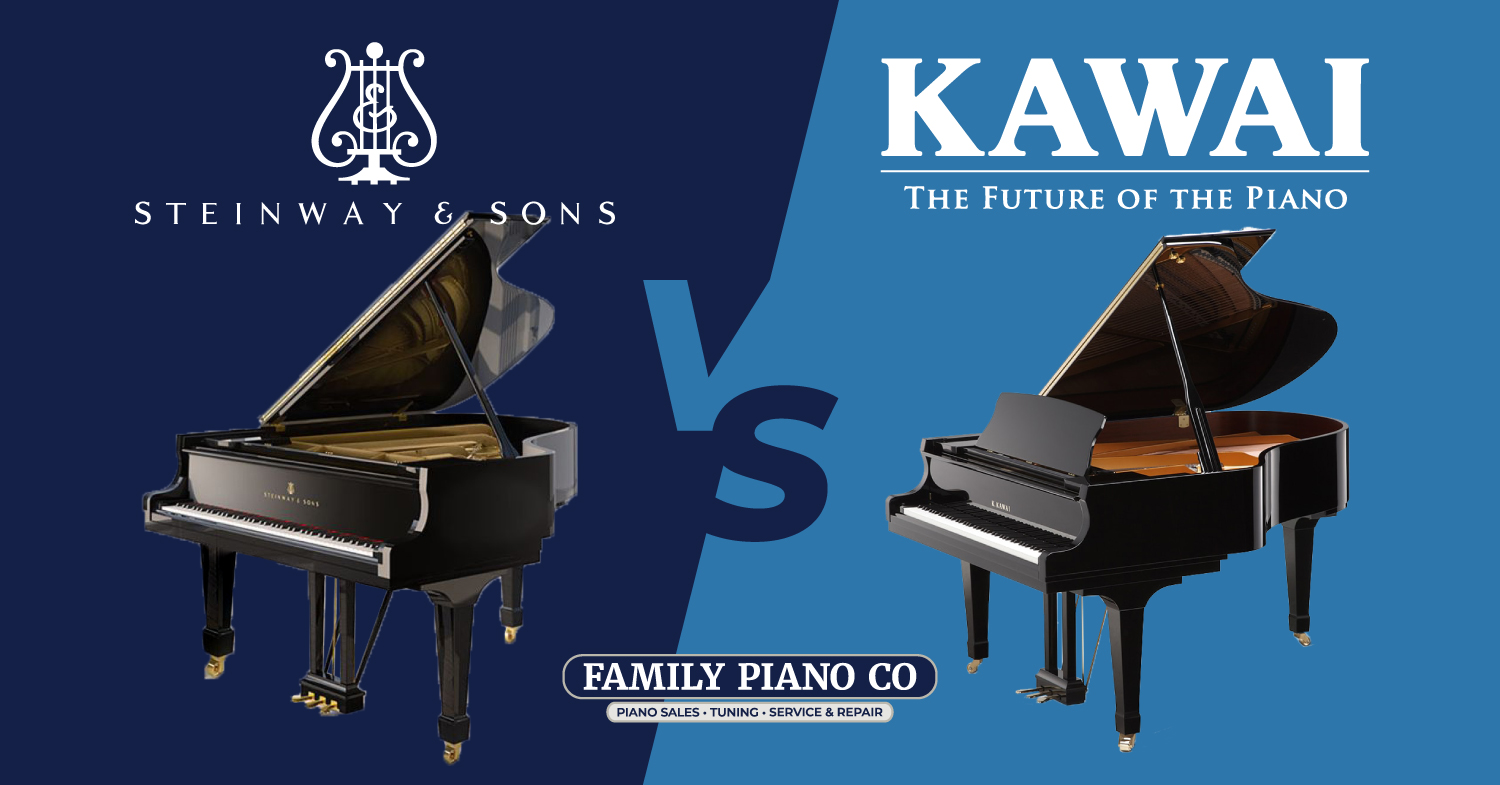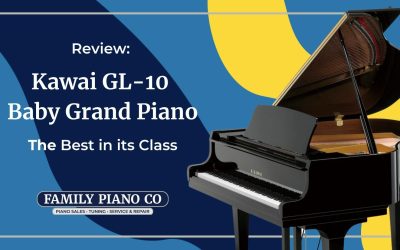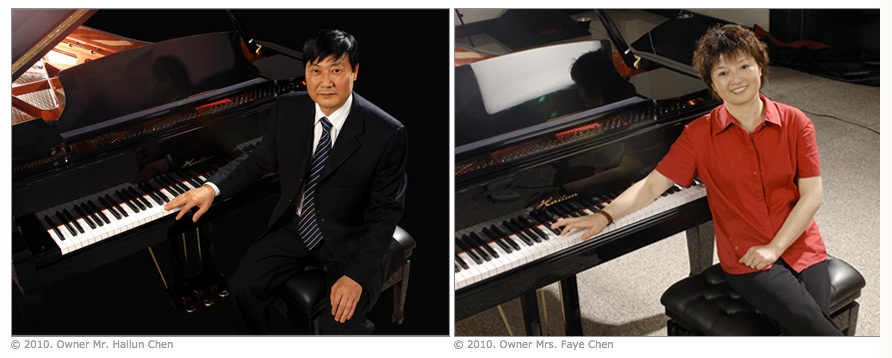A Kawai vs Steinway comparison isn’t exactly apples to apples, but we do think putting them head-to-head exposes some of the myths associated with ultra expensive instruments.
Not many piano brands are as recognized as Steinway & Sons. Since they make some of the most expensive pianos in the world, we would hope their pianos are as great as they claim!
These days though, even as the Washington Post reports, many pianists are looking beyond Steinway towards other exciting high-end piano brands, like Fazioli, Bluethner, Steingraeber, Shigeru Kawai and several more.
But wait, what if you don’t want to invest $100,000 or more into your piano?
As a Kawai dealer, we’re obviously fans of the Japanese piano brand. We think they represent high-quality build and features made available to everyday pianists.
Let’s look into what the main differences between any given Kawai piano and a Steinway piano is in this general brand comparison.
Designed by Steinway: Essex & Boston Pianos
Now, perhaps you’ve heard of the “Steinway Designed” pianos that carry a lower price tag than the Steinway pianos produced in New York City or Hamburg Germany – the “Boston” and “Essex” series.
These carry lower price tags because they’re NOT produced by Steinway themselves. In fact, Boston Pianos are made by Kawai in Japan — on the same assembly line, using the same employees. Boston pianos have never been built in Boston like Steinways are.
Steinway invented the Boston brand in 1992. Then, building on the success of the Kawai-built pianos, Steinway launched the Essex brand in 2001, contracting the manufacture with Pearl River in Ghaungzhou, China, to offer a cheaper option.
While there are legitimate design differences between similarly sized Boston, Essex and Kawai pianos, as Living Pianos points out in their “Top 5 Steinway Piano Myths” blog post:
No company ever OEM’s higher-quality instruments to competitors! And the buyer must pay a premium since two companies have to make money on the sale. You are better off buying a Kawai or Pearl River directly from the manufacturer.
So if your aim is to buy a Steinway at a lower price, do not buy an Essex or Boston piano. They may be tied to the luxury piano brand, but they do not share the same manufacturing procedures. They’re only worth buying if you play them and like them — as should be the case with any other piano!
Piano Price Comparison: Kawai vs Steinway Uprights
Kawai
44" K-15- Built by Kawai in Indonesia
- Advanced Composite Material Action
- 10 Year Transferable Warranty
Essex
44" EUP-111- Built by Pearl River in China
- Traditional Wooden Action
- 10 Year Warranty, Original Owner Only
Boston
46" EUP-118- Built by Kawai in Indonesia
- Traditional Wooden Action
- 10 Year Warranty, Original Owner Only
Steinway
45" Model 4510- Built by Steinway in New York
- Traditional Wooden Action
- 5 Year Warranty, Original Owner Only
MSRP prices last updated on August 2023. Information pulled from PianoBuyer.com, a third-party piano review site. All four pianos are of a similar size and reflect pricing for the Ebony Polish finish.
Steinway pianos are known being the most expensive pianos around, partly due to their reputation as a brand, as well as the fact that they’re made in the United States.
Yet, more affordable pianos like the Kawai K-15 do still offer excellent sound and playability! We can’t recommend them strongly enough to people looking for a high-quality piano at a reasonable price.
As far as the other pianos that are designed by Steinway, The Essex EUP-111 is also a more budget-friendly piano that’s only a little more expensive than comparable Kawai pianos.
For those on a larger budget, the Boston EUP-118 is a more mid-range and taller upright piano that has a very nice sound (but again, is manufactured by Kawai).
If you’re interested in further exploring the technical differences between the named instruments, we recommend checking out the PianoBuyer.com Brand Profiles for each brand, as well as the model descriptions (with specifications) on the manufacturer’s websites.
Do Steinway Pianos Hold Their Value?
No!
The Boston piano brand officially justify these higher prices as “Steinway investments”.” However, these dubious claims that “every handmade Steinway increases in value” has really hurt some customers.
First of all, to speak on their direct quote, whether Kawai vs Steinway vs anything else: all pianos are handmade to some extent.
But more relevantly, 99% of new pianos sold will not even hold their value, much less increase in value.
There are special cases and artisanally-crafted instruments that will, sure. But we’re talking about pianos that are meant to be played and enjoyed.
As is the case with buying a new car, it loses value as soon as you drive it off the lot. If you’re price-conscious, just buy a used piano that has already shed off most of its “value-based” sticker price (that is, perceived value and not actual worth).
So please, do not buy a new piano with the idea of selling it for a profit later. We ourselves buy used pianos all the time. We’re not paying 9x the original price for a used 50yo Steinway Model B piano. That’s absurd.
Handmade as a selling feature and Steinways appreciating in value are two pretty common sales tactics. Read 6 more in our Piano Salesman Tricks & Myths Exposed article!
Steinway Promise: Trade-Up from Boston or Essex
One of the main selling points of purchasing an Essex or Boston is the ability to trade-up to a Steinway later:
In fact, STEINWAY makes you the following promise: if you trade in your BOSTON or ESSEX instrument for a new STEINWAY grand piano within 10 years, we will repay you the purchase price in full.
This is a nice option to have! It’s also very common for any piano store to offer this!
We ourselves have a “double-double” trade-in policy. So if you buy a Kawai K-15 for $6,000, since it bears a 10 year warranty, we’ll let you trade it in 100% towards any piano double its retail price ($12,000) for double its warranty period (20 years).
That’s a lot more flexible than the Steinway Promise — and it’s also not restricted to trading up exclusively to an expensive Steinway and/or only new instruments. Not to mention, this trade-in policy applies to any brand we stock, not just Boston or Essex pianos. Give yourself more options!
Kawai Pianos? Plastic Parts?
If you refer to our price comparison chart above, you’ll notice Kawai pianos are the only ones that use Advanced Composite Material Actions. What does that mean?
Kawai’s proprietary ABS-Styran combines different materials, including carbon fiber and Styran, to create a piano action that is both lightweight and strong. This material is used in the action of all new Kawai pianos, from their entry-level uprights to their high-end concert grand pianos.
There is a common misconception that Kawai pianos use plastic parts in their actions, which can lead some people to believe that they are of lower quality than pianos with traditional wooden actions.
This is not true! That’d be calling calling your sweater plastic because it uses 30% polyester — not the case!
On the contrary, ABS-Styran actually has the benefit of improved durability and consistency. Unlike traditional completely-wooden actions, which can be susceptible to warping and swelling due to changes in temperature and humidity, ABS-Styran is highly resistant to these environmental factors.
This means that Kawai pianos with ABS-Styran actions are more likely to maintain their precision and consistency over time. Additionally, the composite material can be molded to exact specifications, ensuring that each action is identical and that there is no variation from one piano to the next.
But Are Kawai Pianos Good?
When customers want a high-quality piano at a reasonable price — we usually point to Kawai Pianos.
Founded in 1927, Kawai quickly gained a reputation for quality and innovation, and today it’s one of the largest piano manufacturers in the world.
As covered, one of their many, many innovations has been their pioneering work in using ABS-Styran to produce superior piano actions. It doesn’t swell or contract with humidity so it stays incredibly consistent over time. And as a stiffer material, it transmits kinetic energy more efficiently for a better playing experience. And these actions are NOT built into Boston pianos — they’re only found in Kawais!
So yes, we think Kawai pianos are quite good. Not only are they great pianos for the money, they’re great pianos period.
Shigeru Kawai vs Steinway Concert Grand Pianos
We’ve been focusing exclusively on pianos made for homes since. . . well, those are most popular. We sell pianos to families, and those are the kind of instruments we know best. However, we should also look at the high-end to make sure this battle of the brands is holistic!
Shigeru Kawai Grands
Shigeru Kawai is the premium line of pianos produced by Kawai. It was first introduced in 1999, and is named after the son of Koichi Kawai — Kawai’s founder — Shigeru Kawai.
Shigeru Kawai pianos are handcrafted exclusively by certified Master Piano Artisans — Kawai’s most experienced and skilled artisans — in the Shigeru Kawai Piano Research Laboratory in Ryuyo, Japan.
These pianos are made using only the finest materials and most meticulous procedures. As a result of this care and detail, fewer than 250 Shigeru Kawais are made each year!
Steinway Concert Grands
On the other hand, a piano like the Steinway Model D Concert Grand needs no introduction.
Widely regarded as the gold standard for concert grands, the 9-foot Model D been played by countless world-renowned pianists, including Vladimir Horowitz, Sergei Rachmaninoff, and Arthur Rubinstein.
It’s pretty common to find them in concert halls, recording studios, and any other setting that needs the grandest grand piano possible.
Shigeru Kawai SK-EX vs Steinway Model D
Frankly, we’re not sure if any of our staff members have even been able to sit at both a Shigeru Kawai SK-EX 9’0 Concert Grand and a new Steinway 9’0 Model D to speak on them fairly.
However, with similar MSRPs around $220,000, it’s clear that both it and the Steinway Model D are pianos aiming for the best possible playing experience.
There are professional musicians who have extreme preferences for one or the other, but both are overall highly regarded for their exceptional quality and performance. And hey, if someone were to offer us one, we’d take either happily!
If you’d like an actual review of these two instruments, pianist and composer Bohumir Stehlik has one! It’s clear he had a bias for the Steinway going into the video, and that he doesn’t have a technician’s background based on his comments on the pianos’ builds (we also especially disagree that the Shigeru even attempts to be a Steinway clone). But we’re glad he did enjoy the piano, that he demoed excellent compositions with great mic setups, and that many comments balance out his opinion by expressing preference for the Shigeru Kawai! Just goes to show there isn’t a clear winner!
Try Steinway & Kawai Pianos for Yourself!
Despite our general preference due to value, ranking pianos based only on brand is not something we advise. It’s a reasonable place for beginners to start, but you do want to develop your own opinions on things other than just brand (or even price).
So for the best understanding of what the differences between Kawai vs Steinway are, play their pianos for yourself!
We ourselves may be biased towards Kawai, but that’s because we have good reason to think they’re the superior choice for most families! We totally get that your preferences and situation may be different, and we do enjoy Steinway pianos ourselves too!
If you’re interested in trying the Kawai product line for yourself, we encourage you to stop into our showroom! We carry Kawai’s full line of grands, uprights, and digitals. We’re open 7 days a week, and we pride ourselves on being educational, knowledgeable, helpful — and not at all pushy!




0 Comments